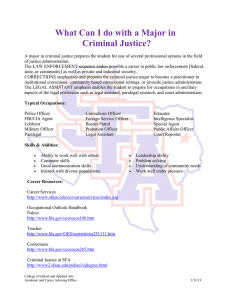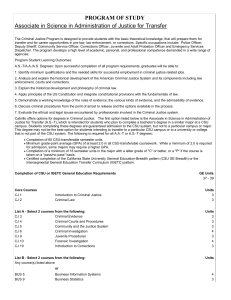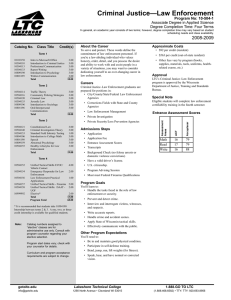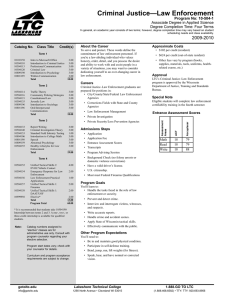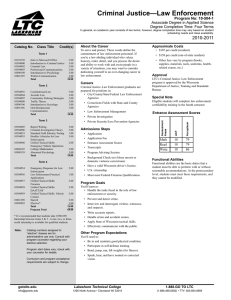Chabot College Program Review Report 2014 ‐2015 Administration of Justice
advertisement
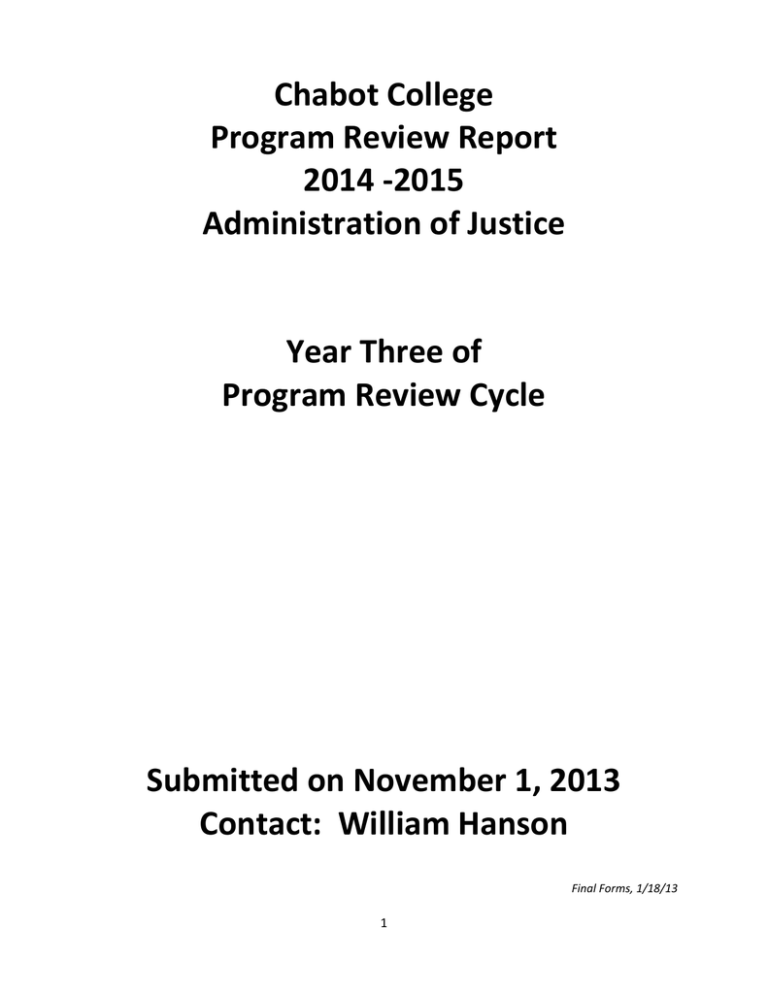
Chabot College Program Review Report 2014 ‐2015 Administration of Justice Year Three of Program Review Cycle Submitted on November 1, 2013 Contact: William Hanson Final Forms, 1/18/13 1 Appendix C: Program Learning Outcomes Considering your feedback, findings, and/or information that has arisen from the course level discussions, please reflect on each of your Program Level Outcomes. Program: Administration of Justice PLO #1: Evaluate and analyze criminal justice issues and topics using knowledge of criminal justice institutions, terminology, theory and ethical issues in crime and justice. PLO #2: Understand the interdisciplinary nature of criminal justice and the varying perspectives of the liberal arts and sciences as related to law enforcement, courts, and corrections. What questions or investigations arose as a result of these reflections or discussions? Explain: Administration of Justice is an interdisciplinary program in that it draws on various disciplines in the social sciences for its concepts, theories, and practices. This is particularly true for the introductory course in the program, ADMJ 50. The success rate for ADMJ 50 is approximately 56% which shows that some students are having difficulty. Our theory is that some students come to the course lacking basic skills, background knowledge of the criminal justice system, and knowledge of other disciplines (e.g., sociology, psychology, etc.) that inform the administration of justice. Also, we draw students with a variety of career goals (e.g., law enforcement, pre‐law, corrections, probation & parole, and juvenile justice). We need to develop clear career and educational pathways for all students in the discipline. What program‐level strengths have the assessment reflections revealed? Strengths revealed: Administration of Justice is the fourth largest major at Chabot (735 – 2010). We draw students with a variety of career goals (e.g., law enforcement, pre‐law, corrections, probation & parole, and juvenile justice). All of our courses are transferable to CSU and four of our courses satisfy the UC ‐ IGETC requirements. Consequently, we attract both students seeking careers in the administration of justice as well as those who have an intellectual interest in the field and choose our courses to satisfy graduation and/or transfer requirements. Having diverse students in our courses enhances the learning for all students. What actions has your discipline determined might be taken to enhance the learning of students completing your program? Actions planned: We recently submitted our proposal for a new Associate in Science for Transfer degree (TMC) for Administration of Justice. In keeping with the goals and purposes of the TMC, the requirements of AS‐T degree provide guidance to students regarding the courses required for transfer in addition to assuring them of their preparation for transfer and upper‐ division work. Most importantly, the completion of the AS‐T degree gives students priority admission into an Administration of Justice/Criminal Justice program in the CSU system. The new AS‐T degree is an excellent example of a clear pathway for our students seeking to 2 transfer and a career in law enforcement or corrections. However, we have a significant number of students who have an interest in practicing public law (e.g., District Attorney, Public Defender, etc.) but there is no clearly identified pathway beginning in community college. Upon approval of our AS‐T degree, I will be submitting a proposal to modify our existing AA degree to focus on a pre‐law curriculum. We are also submitting an application to be part of a State Bar Initiative: Community College Pathway to Law School. I will discuss the proposal in greater detail under “New Initiatives”. 3


